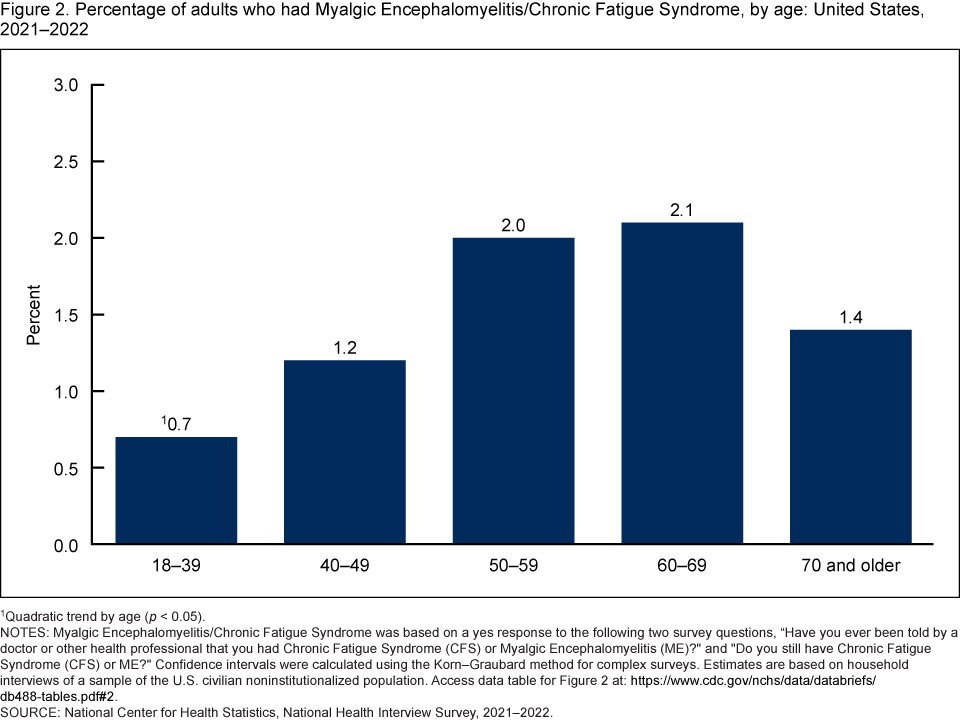CDC: Chronic Fatigue Syndrome 2021-2022 Save

The current CDC report estimates that 1.3% of adults had myalgic encephalomyelitis/chronic fatigue syndrome (ME/CFS), based on the most recent population based National Health Interview Survey (NHIS 2021–2022).
The nosology of what we have previously called fibromyalgia or chronic fatigue syndrome has evolved to the current terminology of myalgic encephalomyelitis/chronic fatigue syndrome (ME/CFS); with all of these being complex, multisystem disorders characterized by activity-limiting fatigue, worsening of symptoms after activity, and other symptoms. It affects all ages, sex, and racial and ethnic groups, the costs the U.S. economy about $18–$51 billion annually.
The current report describes the percentage of adults who had ME/CFS at the time of interview by selected demographic and geographic characteristics based on data from the 2021–2022 National Health Interview Survey (NHIS). As the prevalence estimates in this report are based on a doctor’s diagnosis, adults who are undiagnosed are not included in this analysis. True prevalence estimates may be higher, as previous studies suggest that many people with ME/CFS are undiagnosed.
Primary Takeaways regarding ME/CFS:
- Women: during 2021–2022, 1.3% of adults had ME/CFS with women (1.7%) being twice more likely than men (0.9%) to have ME/CFS.
- Age: ME/CFS increased with age through ages 60–69 and then declined among those age 70 and older. The percentage of adults who had ME/CFS increased with age, from 0.7% among those ages 18–39 to 2.0% and 2.1% among those ages 50–59 and 60–69, respectively, and then declined to 1.4% among those age 70 and older.
- Race: White non-Hispanic (1.5%) adults were more likely to have ME/CFS compared with Asian non-Hispanic (0.7%) and Hispanic (0.8%) adults.
- Affluence: adults with a family income less than 100% of the federal poverty level (2.0%) were more likely to have ME/CFS, followed by those at 100–199% (1.7%), and those at or above 200% (1.1%).
- Rural: The percentage of adults who had ME/CFS increased with increasing rurality of their place of residence.
- Income: Adults with a family income less than 100% of the federal poverty level (2.0%) had the highest percentage of ME/CFS, followed by those at 100–199% (1.7%) and those at or above 200% (1.1%).
During 2021–2022, 1.3% of adults had ME/CFS, and women were more likely than men to have the condition. The percentage of adults with ME/CFS increased with age through ages 60–69 and then declined in those age 70 and older. White adults were more likely than Hispanic and Asian adults to have ME/CFS, and Black adults were significantly more likely to have ME/CFS than Asian adults. Estimates of ME/CFS decreased with increasing family income and increased as place of residence became more rural.











If you are a health practitioner, you may Login/Register to comment.
Due to the nature of these comment forums, only health practitioners are allowed to comment at this time.